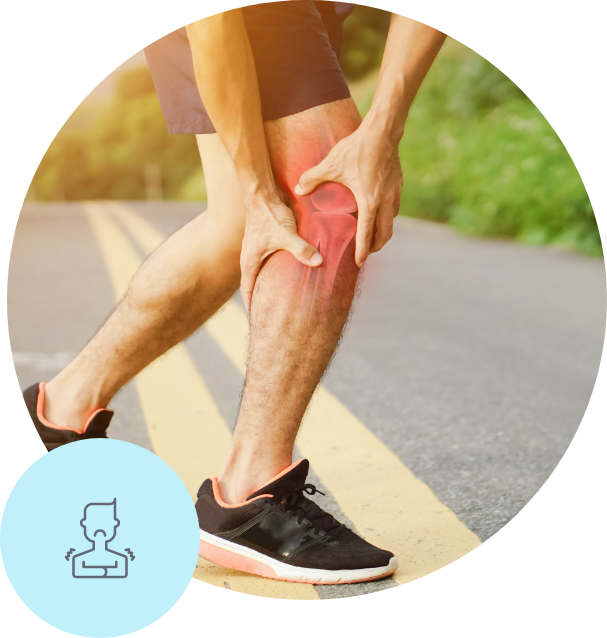Joint or Muscle Pain
Joint and muscle pain are common symptoms during an active Covid infection, but usually, these symptoms start to subside when a patient recovers from the virus. Unfortunately, some patients experience ongoing pain long after they are over the illness.
Are you continuing to experience joint and muscle pain, even though it has been weeks or months since your Covid sickness? Then it’s time to talk to a specialist for personalized care. Our team focuses on post-Covid patients, helping people of all ages find ways to manage long-haul symptoms from this virus.

Symptoms Post-Covid: Joint and Muscle Pain
The severity of pain, the exact location of the pain, and how long it lasts varies from patient to patient. Additionally, patients report different symptoms, depending on their unique experience with this illness.
Symptoms might include:
- Muscle weakness
- Stiff joints
- Bone pain
- Pain throughout the body
- Pain in focused areas
- Burning, aching, or sore sensations
- Feeling tired or fatigued
- Muscle twitches
- Body pain worsens with movement
These symptoms can compound and affect other parts of a person’s overall health. For example, you might notice sleep disturbances because it’s hard to relax in bed when your muscles are sore.
Treatments for Post-Covid Joint and Muscle Pain
It’s only been a few years since the start of the pandemic, so researchers are continuing to gather information and test different treatment options. At this point, providers are still trying to understand the source of joint and muscle pain after Covid. Until we know the underlying cause, it is challenging to treat the root issue. But options are available to manage the pain and help you return to normal daily activities.
Even though you are feeling stiffness and pain, it’s essential to keep moving. Unfortunately, the tendency is for patients to stay in bed to minimize the pain. But this lack of activity can lead to more muscle stiffness and pain. Often, patients can improve their overall well-being by incorporating light movement into their daily routines, such as walking or gentle stretching every 60 – 90 minutes during the day.
Here are a few treatment options to consider:
- Over-the-Counter Medications: Anti-inflammatory medications, such as ibuprofen, can help to alleviate the pain and reduce tissue inflammation at the same time. Follow the package dosing when using over-the-counter medications, or talk to your provider about personalized dosing.
- Prescription Medications: If over-the-counter medications aren’t enough, then your provider might prescribe stronger pain relievers to use on an as-needed basis.
- Alternative Therapies: A combination of alternative therapies might help with relief, such as massage, yoga, stretching, and physical therapy. Occupational therapy might be beneficial if the pain hinders daily activities at home or work.
- Exercise: Movement is key to strengthening the muscles and improving function. Your provider will recommend light exercise in the beginning, with a schedule to increase the intensity and frequency over time. Always talk to a post-Covid specialist before implementing a new exercise routine.
Additionally, there might be other medical interventions that can help to alleviate the pain. Each patient receives a personalized approach when working with our expert post-Covid team. We’ll help you find the most effective medical treatments for your unique symptoms.
Telehealth for Post-Covid Patients
The good news is that you have access to meet with a post-Covid provider at any time. At CovidEMT, we offer telehealth services for patients dealing with long-haul Covid symptoms. Learn more by reaching out to our expert team: 1-888-965-3052.